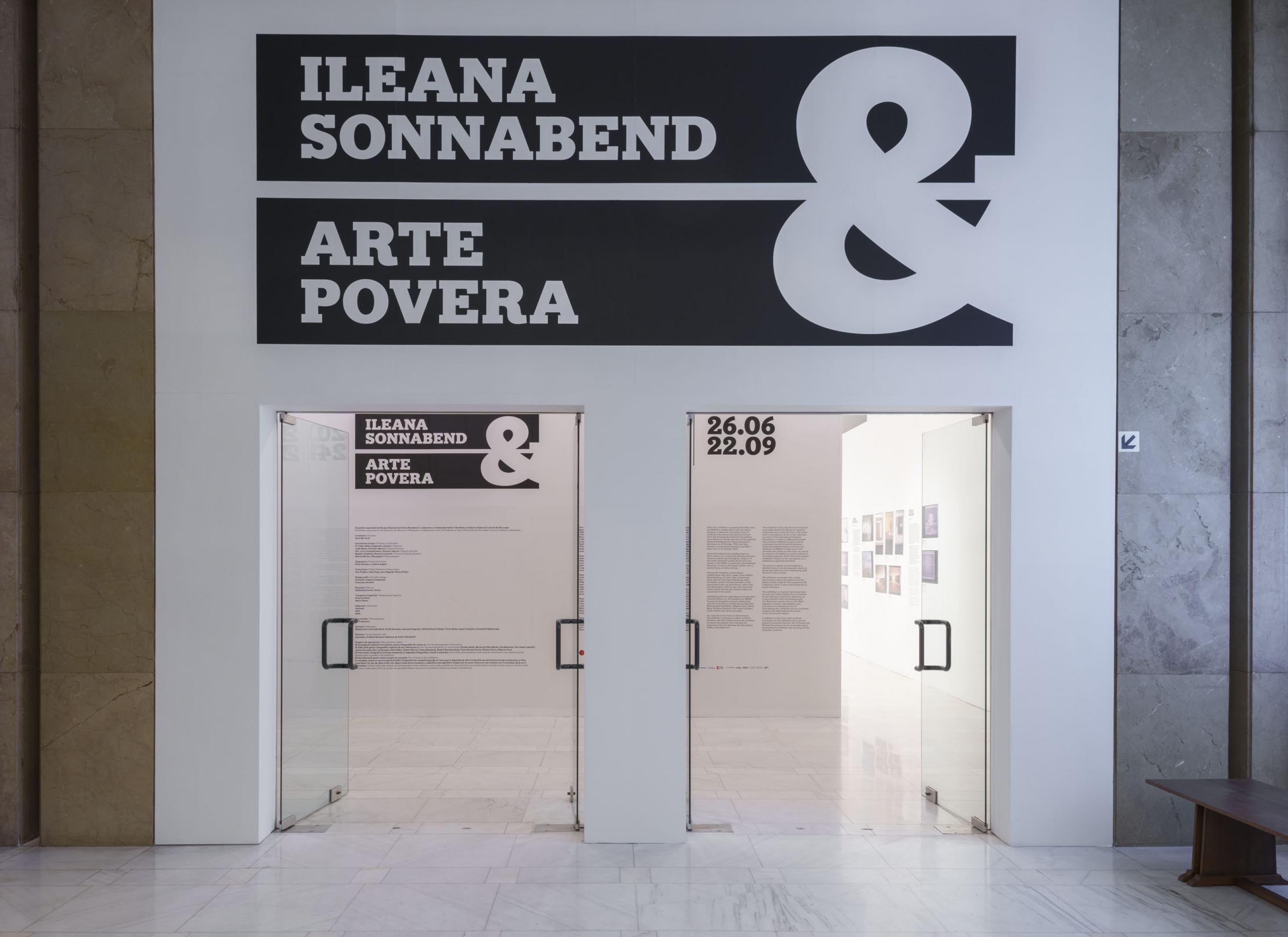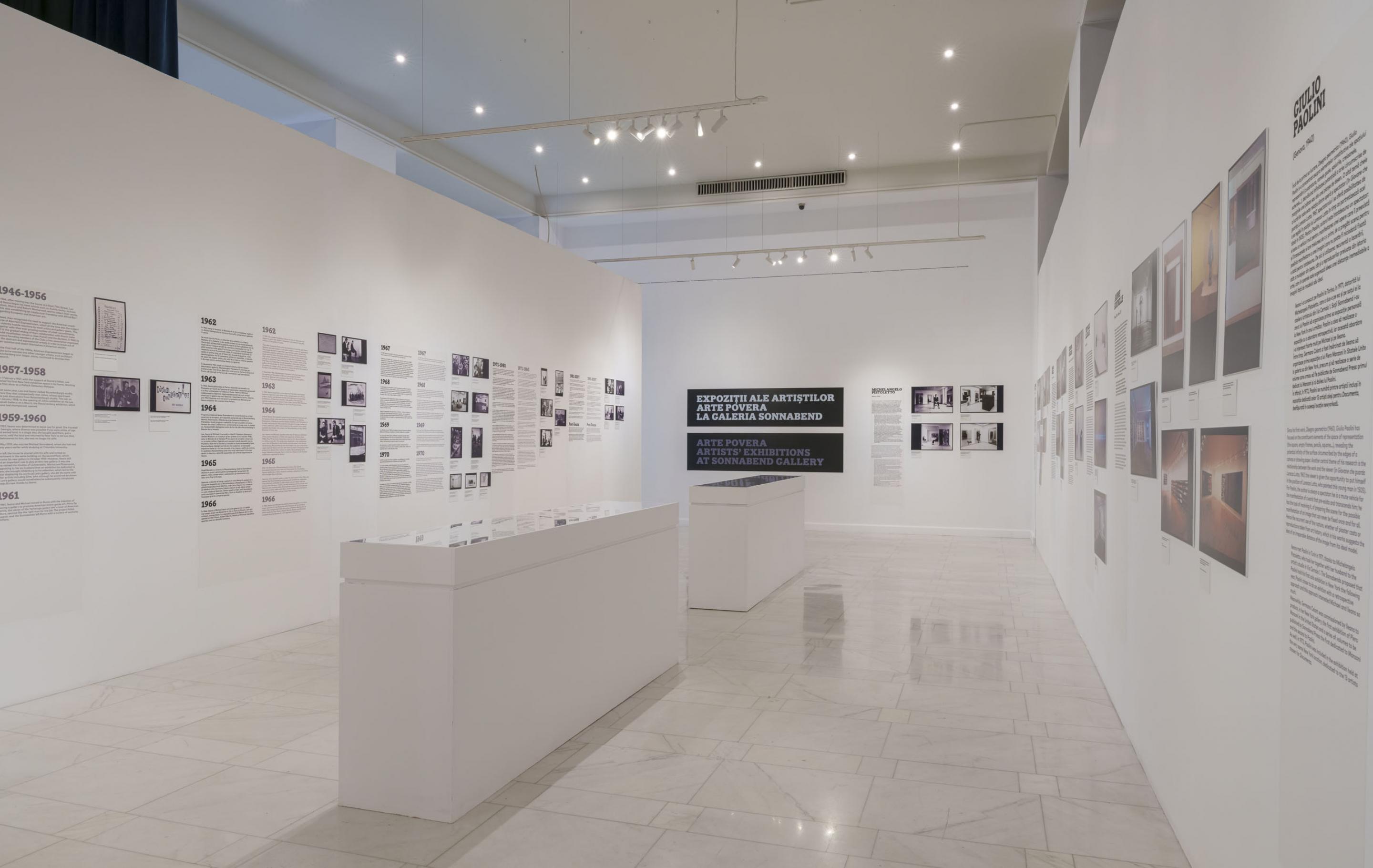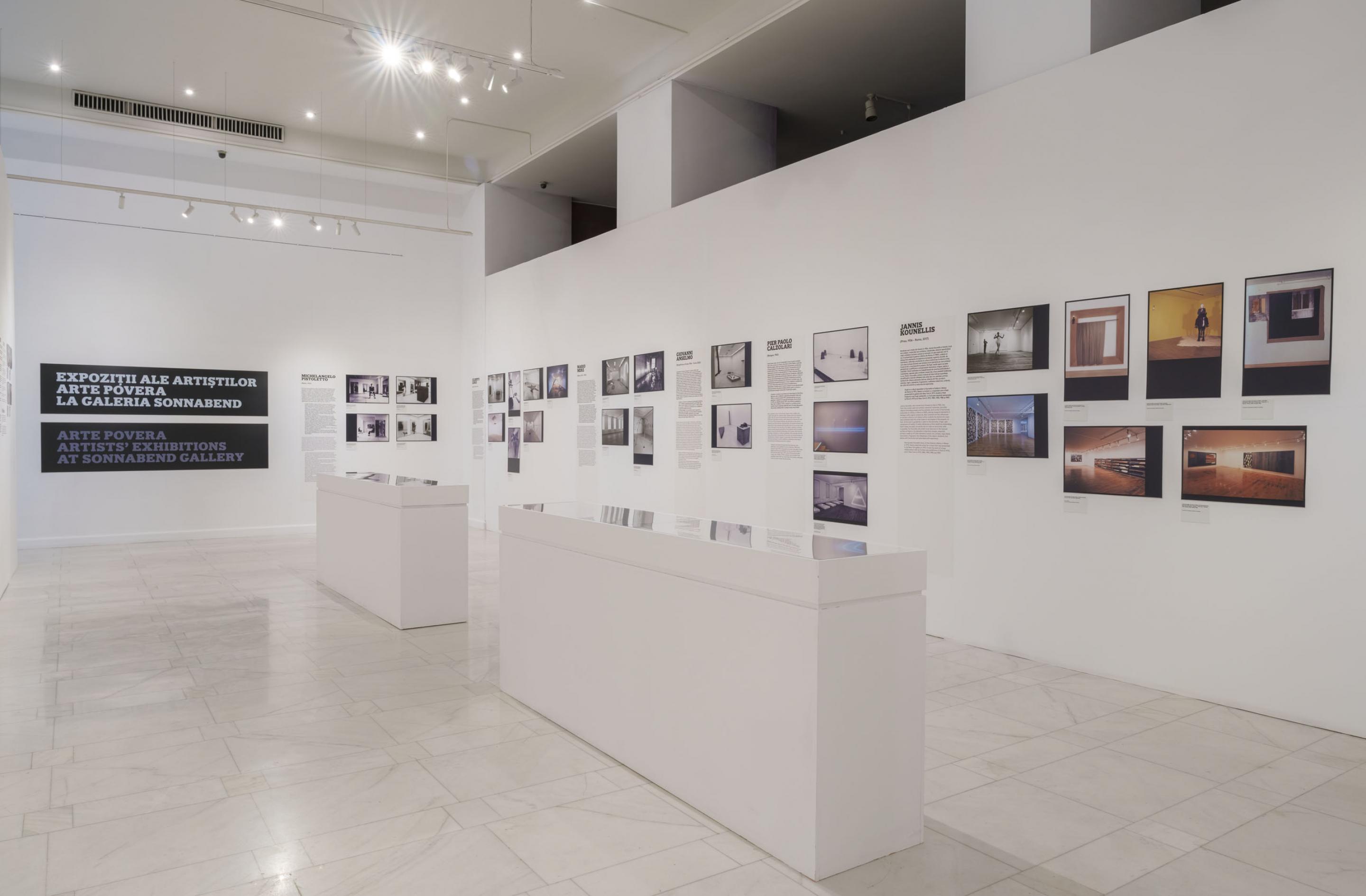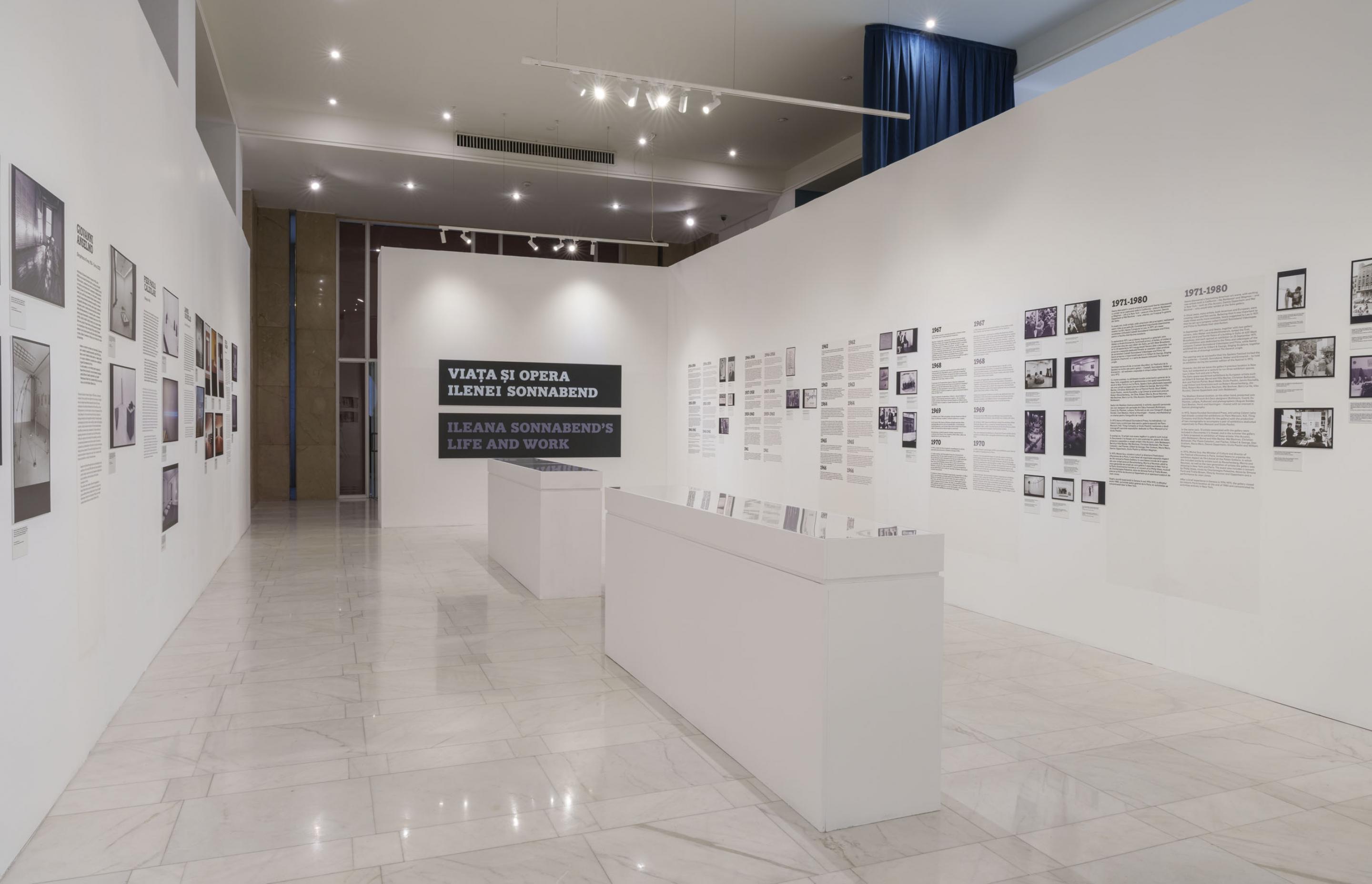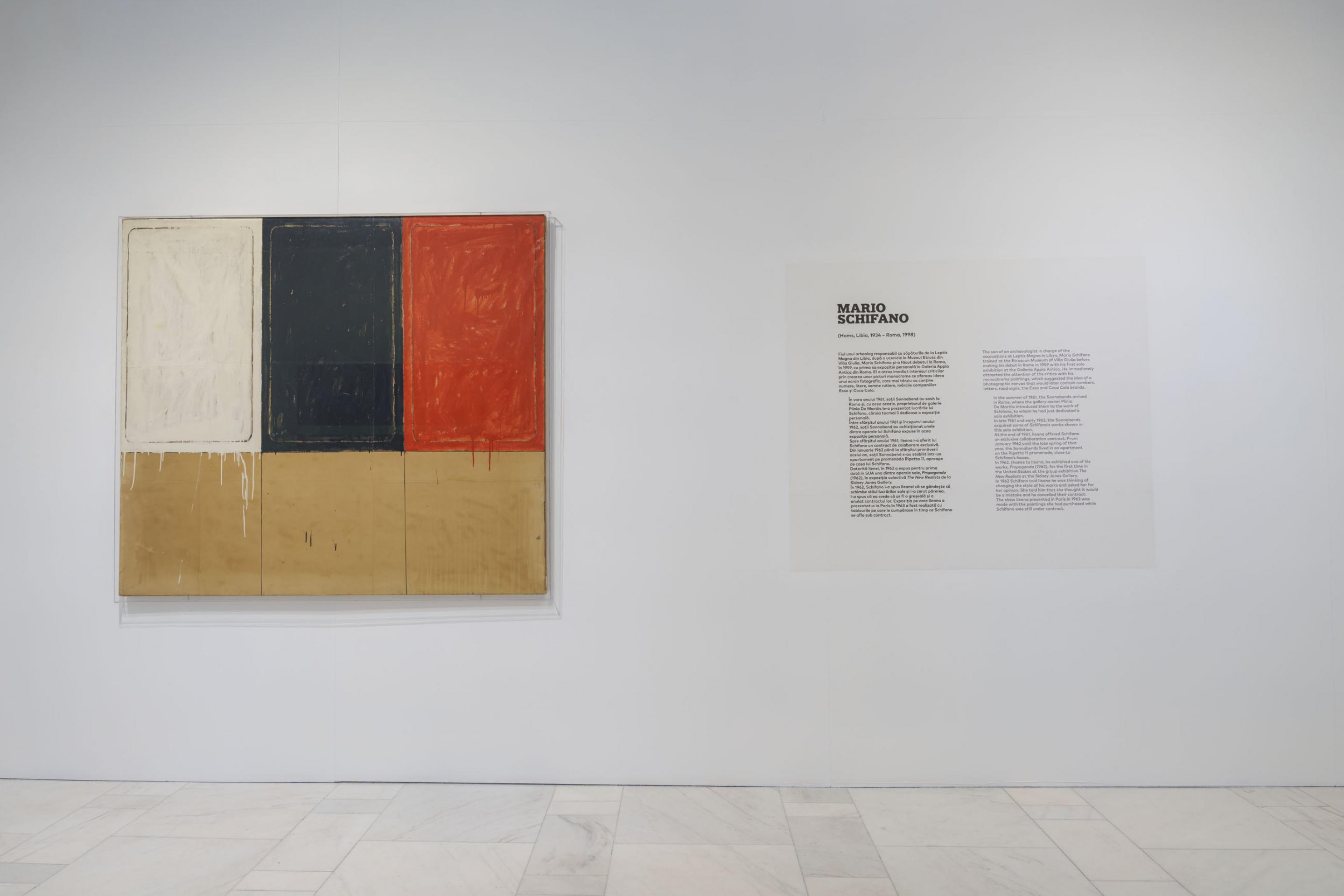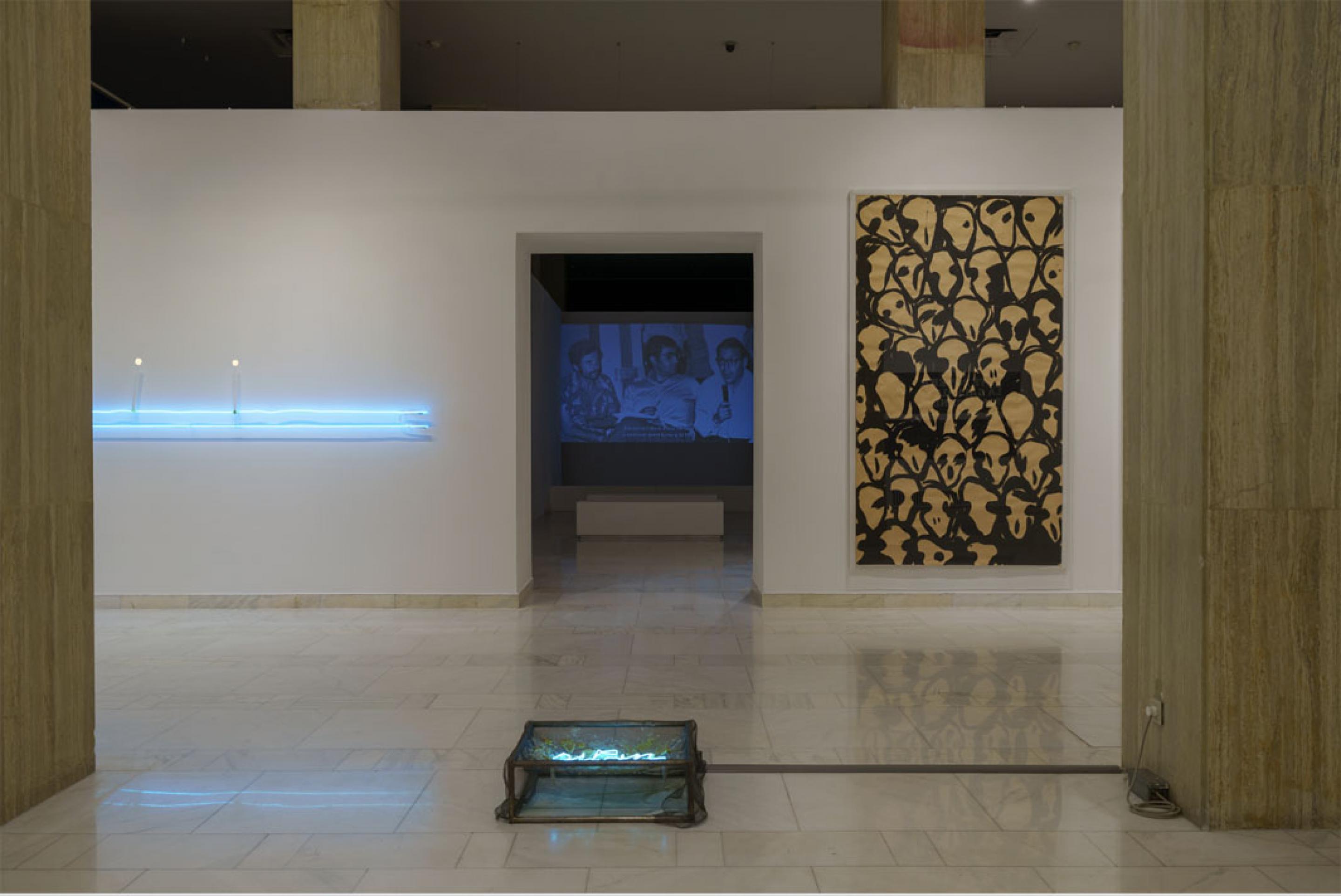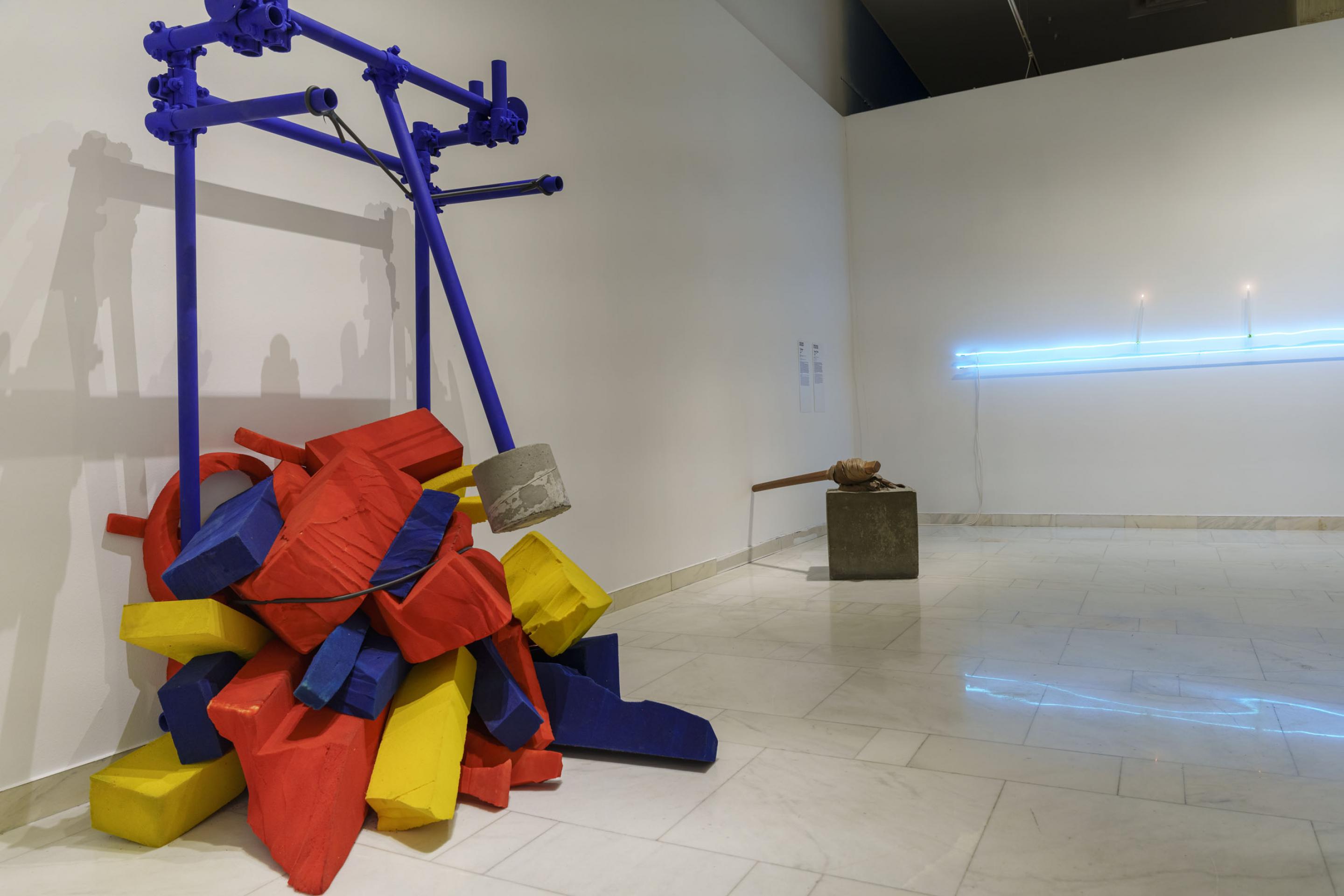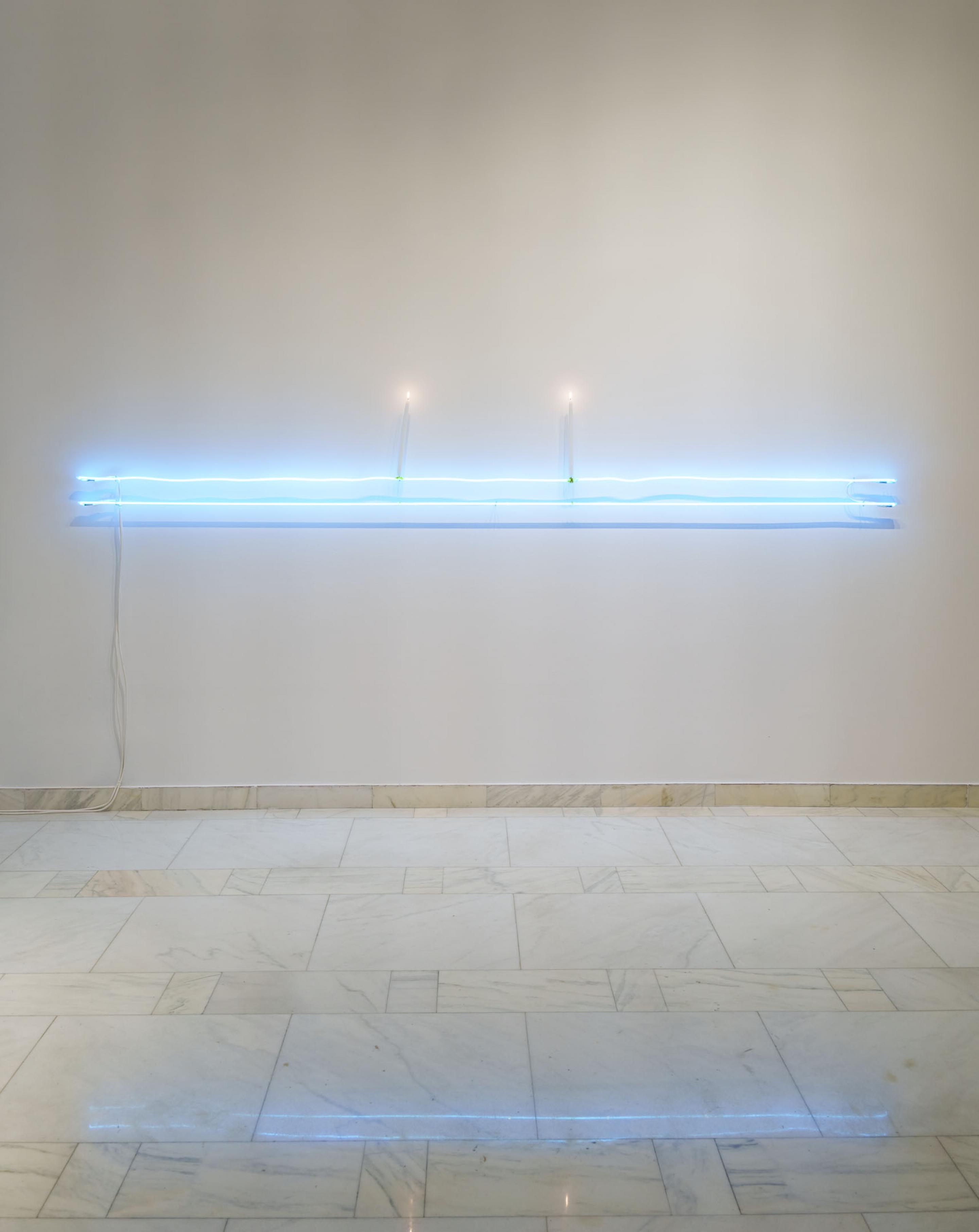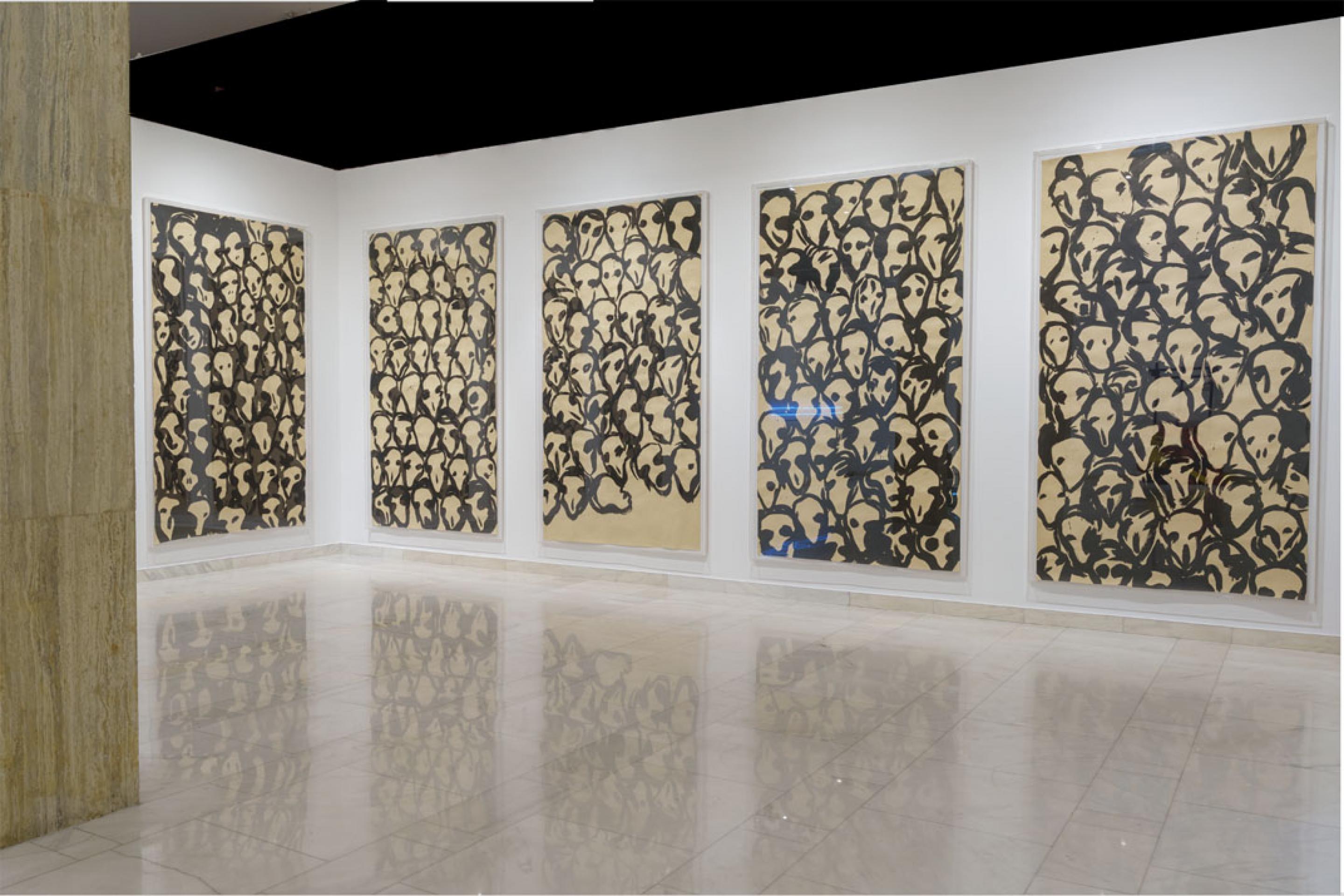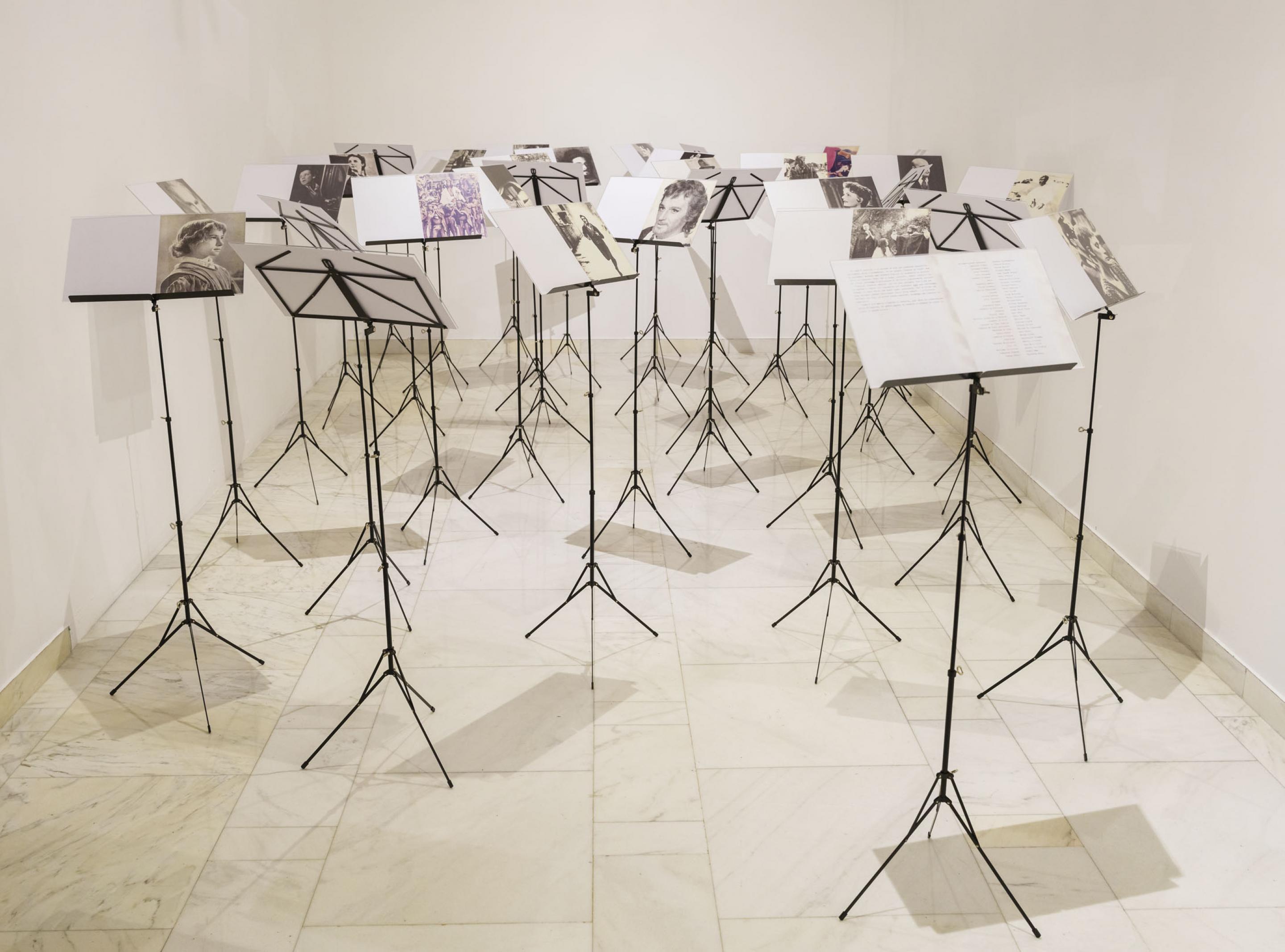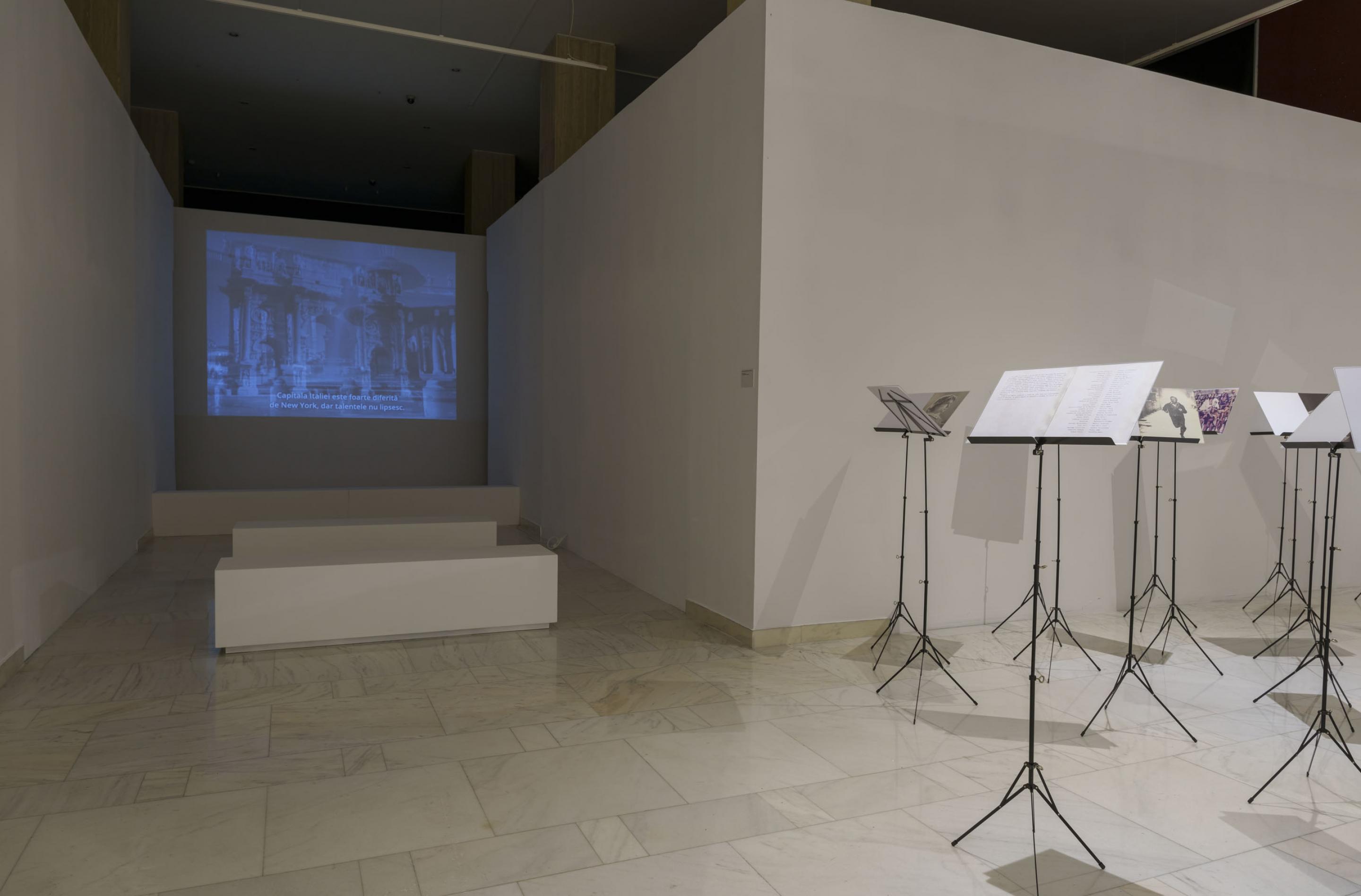ILEANA SONNABEND & ARTE POVERA
GiulioPAOLINI
26.06.–22.09.2024
MNAR-Muzeul Național de Artă al RomânieiEmbassy of Italy in Romania
Italian Institute of Culture in BucharestpresentILEANA SONNABEND&
ARTE POVERAcurated by Ilaria Bernardi
26 June - 22 September 2024
The exhibition is organized in collaboration with Antonio Homem of the Sonnabend Collection Foundation
GiulioPAOLINI
26.06.–22.09.2024
MNAR-Muzeul Național de Artă al RomânieiEmbassy of Italy in Romania
Italian Institute of Culture in BucharestpresentILEANA SONNABEND&
ARTE POVERAcurated by Ilaria Bernardi
26 June - 22 September 2024
The exhibition is organized in collaboration with Antonio Homem of the Sonnabend Collection Foundation
With the exhibition ILEANA SONNABEND & ARTE POVERA, the MNAR-Muzeul Național deArtă al României, in collaboration with the Italian Embassy in Romania, the Italian CulturalInstitute in Bucharest and Antonio Homem of the Sonnabend Collection Foundation, pays tribute tothe life and work of Romanian-born gallery owner Ileana Sonnabend.Ileana Sonnabend (whose surname at birth was Schapira) was born on 25 October 1914 inBucharest and died in New York on 21 October 2007. Open to art and culture from an early age,she met Leo Castelli in Bucharest, whom she married in 1933. Two years later, on the eve of theoutbreak of World War II, the two left for New York where they founded an art gallery in 1957 thatbecame fundamental for the dissemination of contemporary American art. Having later separatedfrom Leo Castelli, in 1961 Ileana Sonnabend returned to Europe with her second husband, MichaelSonnabend, first to Rome and then to Paris.These experiences marked the path that would lead her to become a leading exponent of the art ofthe second half of the 20th century, promoting a dialogue between American and European artthrough the activity of the art gallery that she opened with Michael Sonnabend in Paris in 1962 andthen in New York in 1970.In the 1960s, in addition to supporting American artists such as Jim Dine, Jasper Johns, RoyLichtenstein, Claes Oldenburg, Robert Rauschenberg and Andy Warhol, Ileana Sonnabend hadstrong and continuous relations with Italy, paying specific attention to Arte Povera which, beingtheorized in 1967 by the critic Germano Celant, is still today the most internationally renownedItalian art movement of the post-World War II period.In order to emphasize Ileana Sonnabend's far-sightedness and openness towards Italian art, theexhibition at the MNAR focuses on her relationship with the Arte Povera artists who exhibited inher gallery: those were Giovanni Anselmo, Pier Paolo Calzolari, Jannis Kounellis, Mario Merz,Giulio Paolini, Michelangelo Pistoletto and Gilberto Zorio.The works on display were mostly created between the early 1960s and the early 1970s, and havebecome icons of art history. They include the mirror paintings Due uomini in camicie (Two Men inShirts, 1963) and Ragazza che cammina (Girl Walking, 1966) by Pistoletto, Torsione (Torsion,1968) by Anselmo, Apoteosi di Omero (Apotheosis of Homer, 1970-1971) by Paolini, and Sedia(Chair, 1966) by Zorio.As a preface to the focus on Arte Povera, the exhibition includes a tribute to Mario Schifano, as hewas the first Italian artist Ileana Sonnabend exhibited, thus marking the beginning of her deepconnection with Italian art.
Preceding the viewing of the works are two chronological, textual and photographic in-depthstudies: the first on Ileana Sonnabend and the second on her relationship with the Arte Poveraartists.At the end of the exhibition, a video documentary on the gallery owner and Italian art is screened,made for the occasion by 3D Produzioni and intended for broadcast on Italian television.The exhibition is the first exhibition that Romania dedicates to the Romanian gallerist and the firstinternational exhibition that pays tribute to her not based on works from her collection, currentlybelonging to the Sonnabend Collection Foundation. Indeed, in order both to differentiate itself fromsuch previous exhibition projects dedicated to her and to emphasize the still strong link betweenIleana Sonnabend's history and Italy, the exhibition at MNAR includes works that are owned byItalian subjects - i.e., by Italian Arte Povera artists or their heirs, or by museums, foundations,private collectors, and Italian gallerists - either exhibited in her gallery or showed elsewhere.Significance of the exhibition is therefore crucial both for Romania and Italy.The curator of the exhibition is Ilaria Bernardi, a contemporary art historian specializing in post-warItalian art, with a particular focus on Arte Povera artists, a research to which she has also dedicatedan important exhibition at the Wits Art Museum, Johannesburg, in October 2023. He hascollaborated with, among others, Germano Celant, the theorist of Arte Povera, and CarolynChristov Bakargiev. She curated exhibitions for public institutions in important exhibition spaces inItaly and abroad, including: in Rome, Galleria Nazionale d'Arte Moderna e Contemporanea,Palazzo delle Esposizioni, MAXXI; in Lombardy, Triennale di Milano; Villa and Collezione Panza,Varese; in the United States, Magazzino Italian Art, Cold Spring (NY), ArtOmi (Ghent, NY); SouthAfrica, Keyes Art Mile and Wits Art Museum, Johannesburg; 6 Spin Street, Cape Town.“Ileana Sonnabend's gaze has been able to perceive the creative essence of European and Americanartistic research in the second half of the 20th century, identifying artists and works that have had aprofound impact on the history of international art. These certainly include the Italian artists shesupported; in particular, those of Arte Povera, whose power of language she immediatelyunderstood, and consequently the exportability of their works in the European and Americancontext. The exhibition in Bucharest wishes to pay tribute to that powerful insight of hers, but alsoto the importance of Arte Povera in the international art context” (Ilaria Bernardi, exhibitioncurator).In addition to all the artists, their archives and the lenders of the works, we would like to thankAntonio Homem, the heir of Ileana and Michael Sonnabend, for his indispensable help in theelaboration of this project and the research needed to implement it.
read more
Preceding the viewing of the works are two chronological, textual and photographic in-depthstudies: the first on Ileana Sonnabend and the second on her relationship with the Arte Poveraartists.At the end of the exhibition, a video documentary on the gallery owner and Italian art is screened,made for the occasion by 3D Produzioni and intended for broadcast on Italian television.The exhibition is the first exhibition that Romania dedicates to the Romanian gallerist and the firstinternational exhibition that pays tribute to her not based on works from her collection, currentlybelonging to the Sonnabend Collection Foundation. Indeed, in order both to differentiate itself fromsuch previous exhibition projects dedicated to her and to emphasize the still strong link betweenIleana Sonnabend's history and Italy, the exhibition at MNAR includes works that are owned byItalian subjects - i.e., by Italian Arte Povera artists or their heirs, or by museums, foundations,private collectors, and Italian gallerists - either exhibited in her gallery or showed elsewhere.Significance of the exhibition is therefore crucial both for Romania and Italy.The curator of the exhibition is Ilaria Bernardi, a contemporary art historian specializing in post-warItalian art, with a particular focus on Arte Povera artists, a research to which she has also dedicatedan important exhibition at the Wits Art Museum, Johannesburg, in October 2023. He hascollaborated with, among others, Germano Celant, the theorist of Arte Povera, and CarolynChristov Bakargiev. She curated exhibitions for public institutions in important exhibition spaces inItaly and abroad, including: in Rome, Galleria Nazionale d'Arte Moderna e Contemporanea,Palazzo delle Esposizioni, MAXXI; in Lombardy, Triennale di Milano; Villa and Collezione Panza,Varese; in the United States, Magazzino Italian Art, Cold Spring (NY), ArtOmi (Ghent, NY); SouthAfrica, Keyes Art Mile and Wits Art Museum, Johannesburg; 6 Spin Street, Cape Town.“Ileana Sonnabend's gaze has been able to perceive the creative essence of European and Americanartistic research in the second half of the 20th century, identifying artists and works that have had aprofound impact on the history of international art. These certainly include the Italian artists shesupported; in particular, those of Arte Povera, whose power of language she immediatelyunderstood, and consequently the exportability of their works in the European and Americancontext. The exhibition in Bucharest wishes to pay tribute to that powerful insight of hers, but alsoto the importance of Arte Povera in the international art context” (Ilaria Bernardi, exhibitioncurator).In addition to all the artists, their archives and the lenders of the works, we would like to thankAntonio Homem, the heir of Ileana and Michael Sonnabend, for his indispensable help in theelaboration of this project and the research needed to implement it.
